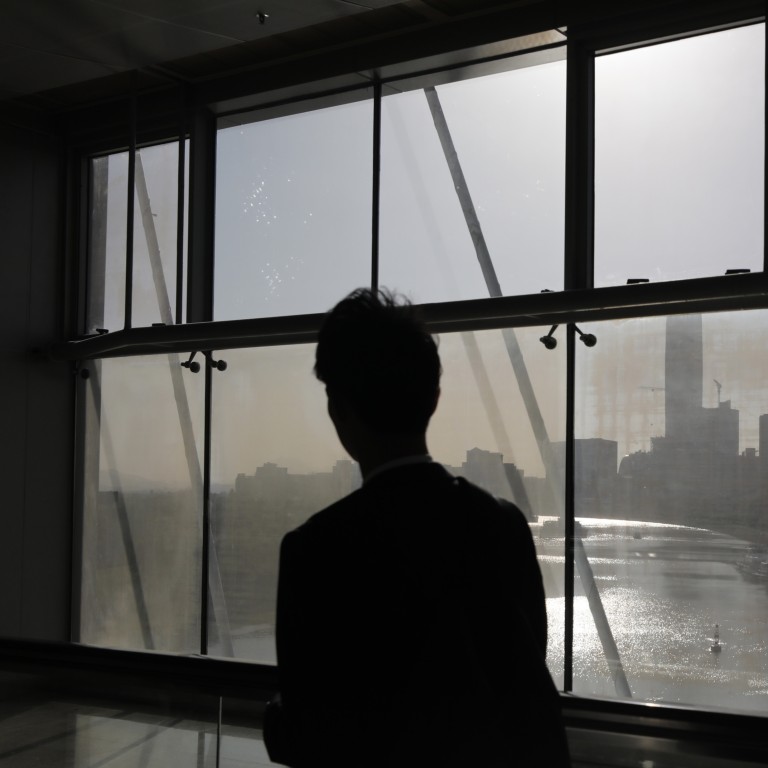
University of Hong Kong to launch system that monitors daily suicide trends, issues warnings based on risk levels similar to weather alerts
- Paul Yip, head of the university’s centre for suicide research, says system will start with data collection of daily cases when it launches in two to three months
- ‘The early warning system operates similar to daily weather reports and it offers amber, red and black alerts,’ he says
The University of Hong Kong is looking to raise awareness for suicide prevention through a system that monitors trends of daily cases and issues warning alerts based on risk levels similar to weather reports.
Paul Yip Siu-fai, head of the university’s Hong Kong Jockey Club Centre for Suicide Research and Prevention, said on Tuesday that the system would start with data collection of daily suicide figures after it launched in two to three months.
“The early warning system operates similar to daily weather reports and it offers amber, red and black alerts,” he told a radio interview.
A population health professor, Yip said the Social Welfare Department currently could only rely on information from up to two years ago because of a lag in data from the Coroner’s Court.

The alarm system would take into account available data about suicide attempts on social media and the number of deaths to formulate a model to deduce when people were most likely to take their own life, he added.
It would consider reaching a crisis level when “the number of cases exceeded three standard deviations above the mean”, Yip said.
He added more than six cases a day would trigger the alert. The average daily suicide cases stood at 2.17.
The model would also calculate a seven-day average and compare the figure with that for the same period the previous year.
In the first 11 months of last year, 37 pupils took their own lives, the highest over the past five years. A total of 269 pupils were known to have attempted suicide in the 11 months.
Last year’s data from the centre also found that pupil suicide figures peaked in May and October.
Health officials earlier said the severity of pupil suicides had “set off alarm bells”.
Fans pay tribute to late Hong Kong drama actor Gregory Charles Rivers
The Education Bureau said four reports of suspected pupil suicides were recorded between December and last Friday.
Yip said that the number of pupil suicides dropped below 10 cases in the period between January and March this year, down from more than 30 in three months during last year’s peak period.
But the overall rate was still 10 to 20 per cent higher than last year because suicides among the elderly remained elevated, he noted.
He also warned that pupil suicides might be on the rise again after the long holidays or during the exam season, calling on the government to help alleviate their pressure.
“Based on what has happened, we want to create an alert so that the situation will not deteriorate,” Yip said.
“For example, we discovered a rise in elderly suicides during the fifth wave of the coronavirus pandemic. Back then, we shared the information with the relevant authorities and stakeholders in society. We saw active responses from them.”
1.6% of Hong Kong secondary pupils attempted suicide last year: survey
Lee Yi-ying, chairwoman of the Subsidised Secondary Schools Council, said that despite the easing situation this year, schools had to continue monitoring pupils’ mental health and identify those at higher risk as early as possible.
“For instance, we use questionnaires to identify which students have greater needs for emotional support,” she said. “Sometimes we learn of those with special needs by what they tell us, such as weekly journals.”
Raymond Yang Sze-ngai, co-founder of Just Feel, an NGO focusing on the emotional well-being of children in Hong Kong, said he hoped the system could offer a “macro perspective” on youth suicide.
“I hope this can be a lens to help people compassionately understand suicide cases,” he said. “From that, we can gain insight into their needs and identify the cause of the issue, both systematically and culturally.”
